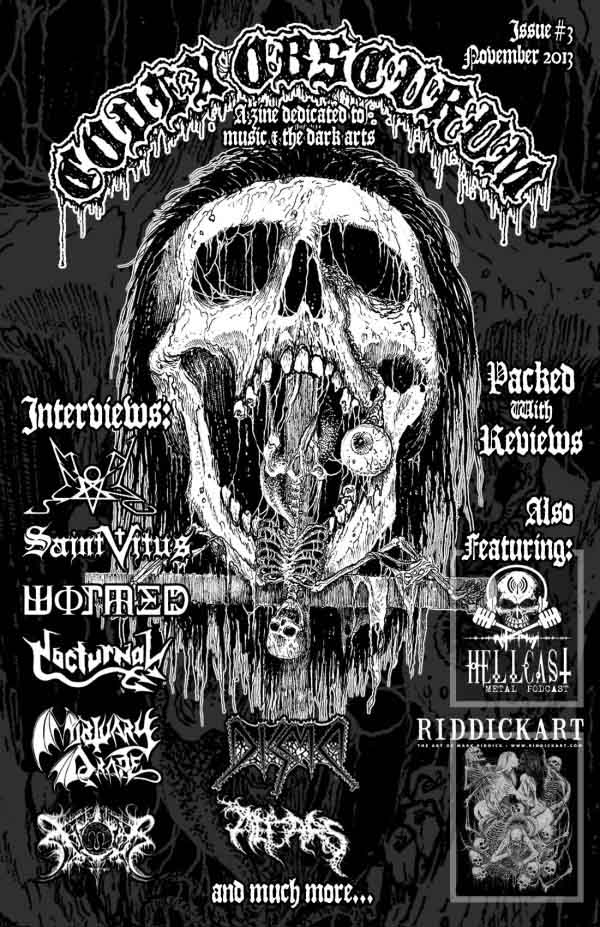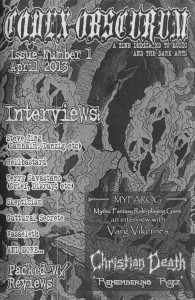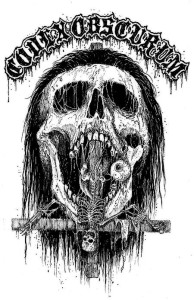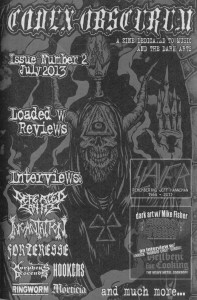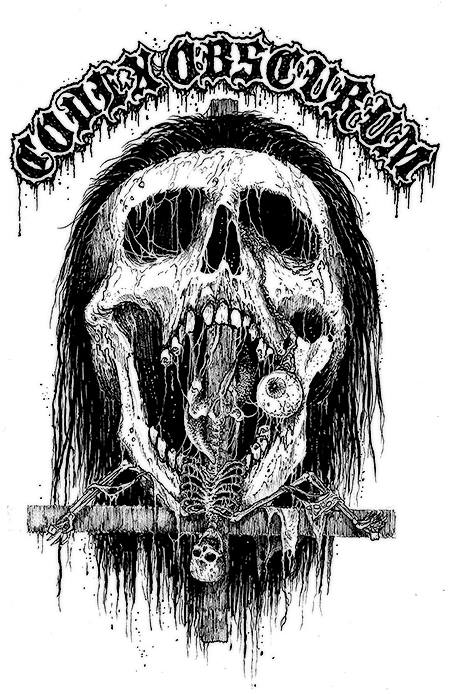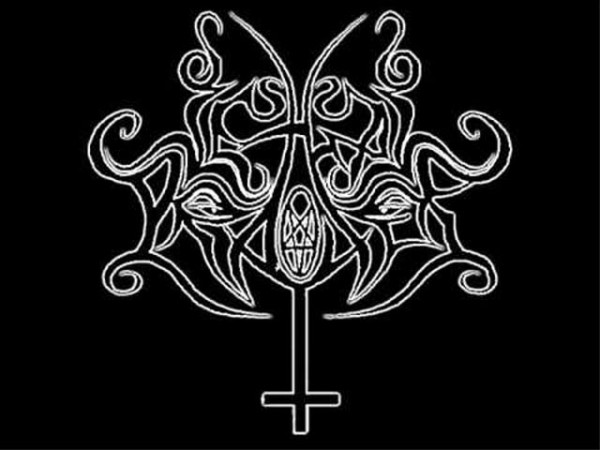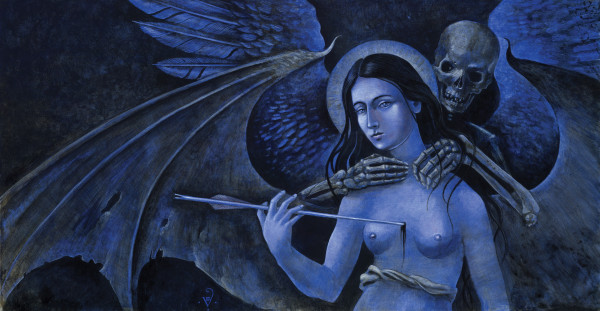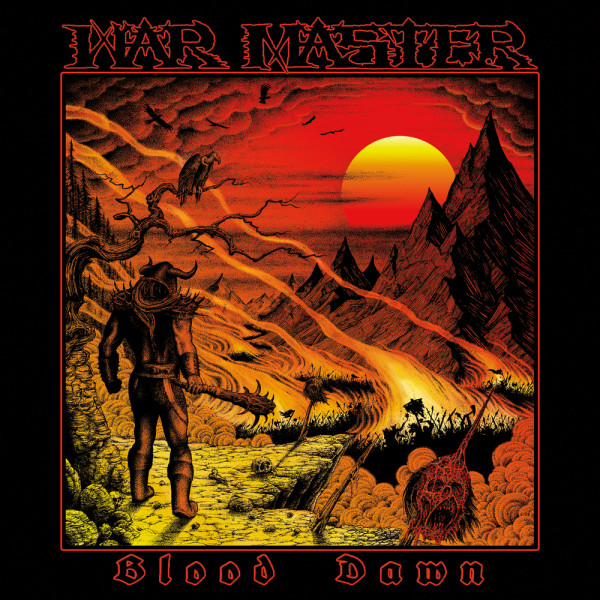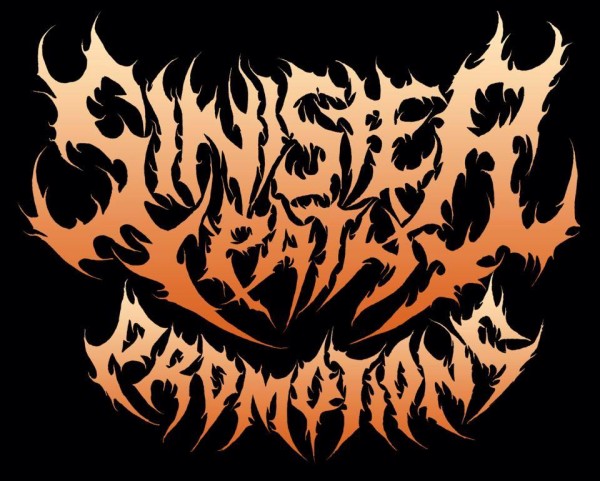
One of the great questions facing metal at this time is how it will propagate itself in a rapidly-changing record industry. Some have gone old school, and there’s evidence suggesting this is the most viable direction. Others are working with the new media to take advantage of its unique abilities.
Sinister Path Promotions is a pioneer in this recent field. By working through social media, Sinister Path reaches a large number of potential fans via their mobile devices and allows them to discover new metal. In addition, Sinister Path concentrates interest in a series of mp3-based compilations which help promote lesser known bands worldwide.
We were fortunate to be able to have brief interactions with Nicole, head of Sinister Path Promotions. Here are her answers to our interrogations.
When did you start Sinister Path Promotions, and what was your intent?
I started Sinister Path Promotions February 2013 (launched via Facebook) with the intent to share metal, and create a community for metalheads to interact. My best friend had recently passed away and I wanted to throw myself into something positive to honor my metalhead mate. My main intent at that time was to create a comfortable, non judgmental, interactive environment. We shared music links, news and did a lot of interactive type posts.
In a few months, we managed to build up quite a large fan base and I wanted to get my teeth stuck into my passion: supporting underground metal. There were a lot of larger pages posting about the more widely known metal bands but not many focusing on the underground. In April 2013 I then put together the first of what is now four independent/unsigned metal band compilations. More recently I’ve gotten involved in interviewing bands and have interviewed with people including Paul Speckmann (Master), Dennis Röndum (Spawn of Possession), and Matt Young (King Parrot).
The main goal of Sinister Path Promotions is to help bring exposure to underground metal. We do that by way of the compilations, interviews, news, and regular posts and interaction on the Facebook page. There are a lot of plans I have for the page and I’m excited to see where this can go!
What sorts of bands do you promote? Do you include “modern metal” (deathcore, metalcore, indie-metal, emo-metal) within that sphere?
I started Sinister Path Promotions with a focus on old school death metal, black, and brutal death metal. For me, death metal is where my heart is, but I think when it comes to promoting bands and doing it in a positive, approachable way, this means trying to include a variety. For us now, the focus is predominantly independent/unsigned metal bands and this includes all sub genres.
The last compilation included the largest variety of metal bands yet: death, pornogrind, brutal death, slam, groove, viking, black, prog, technical death, funeral doom, industrial, folk, thrash, and more.
I take submissions and also and hand pick bands based on what I think the compilations need in terms of balance.
You’re Australia-based; a lot of famous metal has originated there. Do you have a top five or so of bands from Australia?
Top 5? You can’t do this to me! Yes, Australia has spawned some beast bands and it would be difficult to narrow it down. There are so many bands who have been so influential to me like Bestial Warlust, Damaged, diSEMBOWELMENT, Sadistik Exekution, Destroyer 666, Mortal Sin, Blood Duster. Then there are Aussie bands I’m following at the moment and cannot wait to see what they come up with next. I’m thinking about PORTAL, Ne Obliviscaris, Be’lakor, Entrails Eradicated, DEATHFUCKINGCUNT, Seminal Embalmment, King Parrot, Mephistopheles, Disentomb, Nocturnal Graves off the top of my head.
What are the day-to-day activities of Sinister Path Promotions? Are you planning to expand?
I run with a very small group of active admin (at the moment there are only four of us). Our day-to-day aim is to expose underground metal by posting music links, art, news updates, tour updates etc. We pepper this with some more well known bands, gear porn, interaction statuses, specific posts about underground musicians, statuses about our own personal gear/merch, basically anything that will be engaging and could help bring exposure to a band.
We have just launched a new compilation, so linking songs off that and promoting the bands involved in that is a priority at the moment. Us admin continually work in the background corresponding with each other about independent/unsigned bands that could potentially be approached to be involved in our samplers.
In terms of the future for Sinister Path Promotions, the independent/unsigned compilations are ongoing, the interviews are ongoing, the active nature of the page will always remain the same. I’m interested in exploring a variety of things including the potential of being a label, and setting up shows.
How did you (Nicole) get involved with extreme metal — was there a first band? What made you like this weird form of art?
The more extreme types of metal? Probably checking out gigs at University I think. There was quite a large metal scene there and shows on all the time. Prior to that I listened to heavy music all through school, and as a kid my dad was into punk and heavy rock. My brother used to sneak me into metal shows when I was underage too which is pretty cool haha. Was always open to heavier forms of music and always looking but I got serious about heavier and more extreme shit from Uni onwards really. I mean, I’ve always been into my music, have played guitar for 13 years, learning the drums, have been in bands, solo performances over the years. I know what it’s like to try to get exposure and I think that’s why promoting the underground is so appealing to me. I’m like a woman possessed trying to get the word out, and the moment when someone is introduced to a band via the compilations or the page, that’s the sex for me you know? That’s what it’s all about.
Can you tell me more about this underground bands compilation you’ve put out. Is it a physical release, and how did you select bands? Who do you think will enjoy it most?
You can have a look at the compilation at http://sinisterpathpromotions.bandcamp.com/
The latest one is called: Sinister Path Promotions Unsigned / Independent Metal Band Compilation December 2013
Released through Bandcamp as a digital release; you can stream it or download it completely free. If you click on the individual tracks you’ll find more information on the bands so you can support them.
This current one has 42 metal bands from all over the world.
I approach the majority of the bands on it. I do have people who inbox the page or contact me other ways, and I check all of them out from there but mostly I look to gather up a variety of bands and styles and from there talk to them about being involved.
The compilations are a great way to check out some bands you might not have previously been exposed to and great for those interested in supporting the underground.
They’re awesome for bands to get involved with for a number of reasons. It helps bring some exposure because we link the bands on the compilation on a regular basis. The bands involved can contact me on the page any time they’d like to put out some news, info on new releases, pics, anything they’d like.
If people are interested in your promotions company, where should they go to contact you and/or read more?
They can contact me by emailing sinisterpathpromotions@gmail.com.
Check out the Facebook page for Sinister Path Promotions (inbox me there if you’d like).
The compilations can be streamed / downloaded for free at the Sinister Path Promotions Bandcamp site.

4 CommentsTags: Black Metal, death metal, Grindcore, new media, sinister path promotions
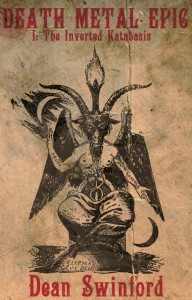 The intersection of death metal and fiction has so far remained fairly murky. Part of this is because writing fiction about death metal is hard and has a tiny audience, where writing fiction that mimics death metal is downright impossible and will send us all scurrying back to our Lovecraft and Poe.
The intersection of death metal and fiction has so far remained fairly murky. Part of this is because writing fiction about death metal is hard and has a tiny audience, where writing fiction that mimics death metal is downright impossible and will send us all scurrying back to our Lovecraft and Poe.

